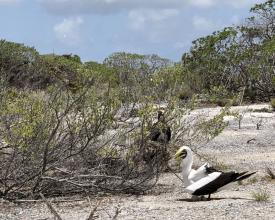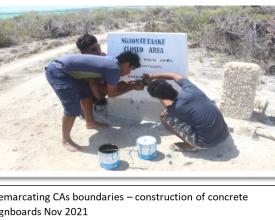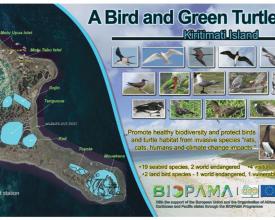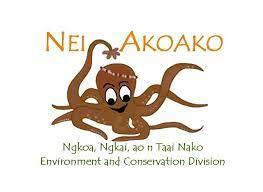
The conservation and protection of seabirds in Kiritimati Island.
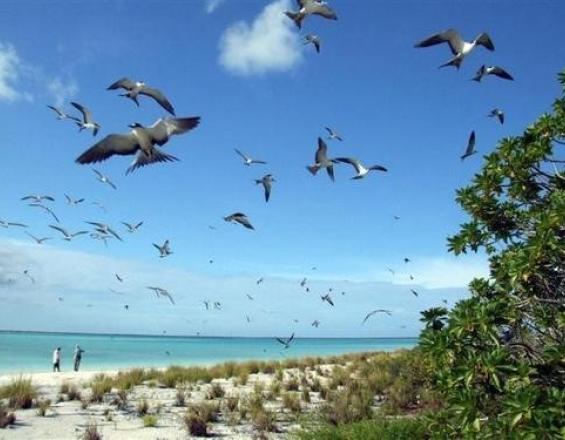
The conservation and protection of the vulnerable seabirds, through the enhancement of the closed and protected areas management, is a Solution that the Kiribati Government is applying in Kiritimati Island. The island is a key biodiversity area for many global important colonies of seabird species, including the two endangered species, the Phoenix Petrel and Polynesian Storm-petrel, and one endemic species namely the Christmas Island warbler.
The Solution reduces the impact of human-induced threats, and invasive species on the vulnerable seabird species and their habitat. It enables the Wildlife officer to manage and control activities that are happening within and around the closed/protected areas.
Context
Challenges addressed
Loss of diversity of the seabird species is a common challenge in Kiritimati Island. This challenge is caused by the following factors:
a) Increase in poaching due to the rapid increase of human population in the island. Locals are involved in the illegal activities such as killing of adult seabirds and collecting of seabird’s eggs for consumption.
b) Invasive species destruction. Cats and rats are the common invasive species in most protected areas, and they are very destructive as they eat seabirds (adults and juveniles) and eggs as well.
c) Climate change impacts the seabirds’ habitat.
d) Lack of enforcement and eradication activities carried out at the protected areas due to the lack of technical capacity and equipment of wildlife rangers to conduct these activities.
Location
Process
Summary of the process
The two key success factors are connected in the sense that the developed integrated management strategy and action plan is implemented at the field by rangers, therefore, the rangers are highly required to undertake any training provided on the enforcement procedures, seabirds assessment and monitoring, and invasive species eradication.
Building Blocks
Development of an integrated management strategy and action plan for the protected areas and conservation of seabirds and their habitat on Kiribati Island.
This building block emphasizes the major concern of the Government of Kiribati regarding the challenges in the management of the protected areas and seabirds. The Government of Kiribati, through the Wildlife Conservation Unit (WCU) of the Environment and Conservation Division (ECD), has been struggling for the past 30 years in managing the protected areas in Kiritimati Island. But through the development of this integrated management strategy and action plan, the Government of Kiribati is able to manage and address the identified or common environmental challenges that are affecting the health of the seabird species successfully and effectively.
Enabling factors
-
The full support from the local council and other Government agencies in the development of the project is one of the key enabling factors for the success of the management strategy and action plan development.
-
The full support from the community to the development of the management strategy and action plan is another key factor. Most of the communities, who participated in the consultation, were very supportive of this important management plan. They even gave some suggestions and advice for strengthening the implementation of the management plan.
Lesson learned
-
Having a good collaboration and partnership with the key stakeholders (local communities and other key Government enforcement partners) to fasten the development and process of the intended Management plan.
-
The consultation to local communities to enlighten them on the importance of the vulnerable island seabirds to the environment and ecosystem, and also emphasize the real factors that caused the decrease in the number of seabirds, will persuade them to reconsider their actions that have an impact on these seabirds.
Capacity building of Wildlife Rangers on the enforcement procedures, monitoring of seabirds, and invasive species eradication.
This building block emphasizes the main solution to the lack of capacity of wildlife rangers. Doing this activity requires good planning and preparation to convene a successful training. The activity enhances the capacity of wildlife rangers so they would be able to carry out the enforcement, seabirds monitoring, and invasive species eradication activities effectively. This building block is very essential, therefore, the wildlife office continues to search for funding, as much as they could, to cover all the cost of these capacity buildings to ensure that all their rangers are well equipped to execute their responsibility.
Enabling factors
-
The full participation of wildlife rangers in these trainings. Without their full commitment and participation in these conducted trainings, the outcome of these trainings or capacity buildings will not be achieved.
-
Full support from the Management team in these training sessions. There is a need to involve the management in the preparation phase, so they are well aware of the training content.
-
The great commitment and effort given by the trainer, when conducting these training, will make the training very fruitful.
Lesson learned
Having a good and well organized workshop or training will bring lots of benefits to the rangers, and will effectively build their capacity in every operation they will conduct at the field in the coming future.
Impacts
-
Management plan for the protected areas in Kiritimati Island was developed and implemented.
-
The biodiversity and seabird species were protected and recovered.
-
The Wildlife officials were well equipped to conduct enforcement, monitoring and eradication activities.
-
The Wildlife officials were well trained on the enforcement procedures, seabirds monitoring, and invasive species eradication.
-
Local communities and other Government agencies were well aware of their roles and responsibilities in the conservation and protection of seabirds’ species.
-
Legislation on conservation and protection of wildlife were well strengthened and updated.
Beneficiaries
-
Local Communities
-
Wildlife rangers
-
Tourism Authority
-
Kiritimati Land Management Division (KLMD)
Sustainable Development Goals
Story
Kiritimati wildlife rangers are the front-liners in the conservation and protection of the seabird species in Kiritimati Island. These rangers take risks and put their own lives on the line to protect their vulnerable island seabirds, and have given so much precious time in the wild spending it for patrolling and monitoring the area for the sake of conservation. These rangers have encountered so many problems that could put their lives in danger such as obstructions and opposition from poachers. Despite the lack of capacity building on enforcement tactics and self-defense for them, these rangers are willing to execute their responsibilities in the wild without question. There are so many illegal activities at the closed/protected areas that they have encountered during their patrolling, but they managed to overcome and resolve them on the spot.
In the island, there are only 6 wildlife officers/rangers actively working on this field and they are responsible to look after and protect 6 closed areas and 3 protected areas/islets approximately. These rangers usually work in teams in every patrolling activities and other operation done in closed and protected areas including seabirds assessment and monitoring, and invasive species eradication. The rangers have been trained in conducting these activities, but they still have to go through refresher training to maintain their skills and knowledge on these important operations or activities.
In the last 20 years, the rangers managed to penalize those locals, who have been found to do illegal activities at the closed and protected areas. They have been through so many court proceedings and have also won most of them. The commitment and actions of these rangers in every operation, have contributed to the country’s economy through the fines, and most of all contribute to the health and lives of the vulnerable island seabirds.

